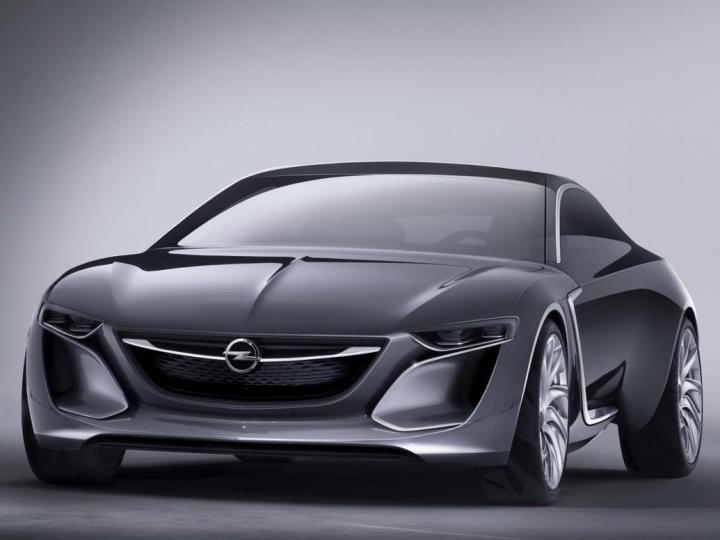
Opels generally don’t cause much excitement, but General Motors’ German division will definitely be getting some attention at the 2013 Frankfurt Motor Show. The Monza concept it will unveil there features sleek styling, a plug-in hybrid powertrain, and some new dashboard tech.
The Monza is named after a series of Opel coupes that were produced from 1977 to 1986. In keeping with tradition, the 2013 Monza takes the form of a two-door fastback with a low, wide stance and shooting brake-like silhouette.
The overall look is refreshingly stylish for a plug-in hybrid. The coupe bodywork puts the more practical Chevrolet Volt and its Opel Ampera twin to shame. It even gives GM’s other two-door plug-in, the Cadillac ELR, a run for its money.
However, what really sets the Monza apart are its roof-hinged doors, which look more than a little like the Tesla Model X’s “Falcon Doors,” and would probably be more helpful for passengers trying to duck into a low slung coupe than an SUV.
Underneath the extroverted skin is a new generation of plug-in hybrid powertrain. Derived from technology used on the Volt and Ampera, it uses a small 1.0-liter three-cylinder engine. As if that wasn’t green enough, it will be powered by compressed natural gas.
Details on the Monza’s electric motor and battery pack aren’t yet available. GM is most likely spotlighting the three-cylinder engine because it will be made available in the Opel Adam city car in the coming months.
Future Opel buyers may also get versions of the Monza’s futuristic dashboard, which uses LED projection technology. This allowed Opel to eliminate the individuals gauges and screens, creating one sweeping surface that extends from door to door. The entire surface acts as one display, and features 3D graphics. Opel says this is the first automotive application of this technology.
To prevent information overload, Opel devised a three-word system for prioritizing what the driver sees. “Me” only presents information relevant to driving, “Us” allows passengers to log into the car’s infotainment system to access their own social networks, and “All” connects the driver and passengers to everyone and everything. It could, for example, allow drivers to share their routes with smartphone and tablet users, turning every Opel into a gypsy cab.
The magic dashboard and economical 1.0-liter engine may be the only parts of the Monza that see production; the car itself is strictly a showpiece. While most Opel products don’t make it to the United States, the Monza could also hint at the plug-in hybrid powertrain that will be under the hood of the next-gen Chevy Volt.
Is the Opel Monza your kind of green car? Tell us in the comments.


